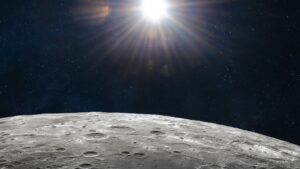Well, it appears that Jupiter has once again outpaced Saturn in their 400-year-old game of, “How many of our moons have the monkeys on planet Earth noticed so far?”
The solar system’s largest planet has pulled ahead again, thanks to one Scott Sheppard of the Carnegie Institution for Science. Sheppard’s latest observations bring Jupiter’s total moon count up to 92, breaking Saturn’s previous record of 83. The Minor Planet Center (the organization in charge of keeping track of these sorts of things) has been publishing the new moons’ orbital paths since late December 2022.

Orbital paths of Jupiter’s moons. Different colors denote different types and sizes of moons. The red lines illustrate the orbital paths of the dozens of smaller moons that orbit Jupiter in retrograde (the opposite direction to Jupiter’s rotation). Nine of the freshly discovered moons would go into this category, though this map has not been updated with their orbits yet. Illustration: Scott Sheppard
The new discoveries represent an ongoing moonapalooza for Sheppard. The scientist and his team previously discovered an additional 12 Jovian moons in 2018 while searching for “planet nine,” a theorized ninth planet orbiting on the extreme outskirts of the solar system.
Nine of the newly discovered moons are in a distant retrograde orbit, meaning they are orbiting in the opposite direction of Jupiter’s rotation. Three are closer to the gas giant, though that just makes them harder to find.
“The reason is that they are closer to Jupiter and the scattered light from the planet is tremendous,” Sheppard told Sky & Telescope.
But Jupiter shouldn’t get complacent. As will be familiar to battle-hardened veterans of the great Pluto debate of 2006, it seems like the winner of this contest depends on your chosen definition of moon.
If you count objects measuring at least three kilometers across, “Saturn would have more moons than all the rest of the solar system,” Brett Gladman of the University of British Columbia and noted Saturn-lover, told Sky & Telescope with what I like to imagine was a bit of a tone.
A contest 400 years in the making
Jupiter got an early start in this competition when Galileo discovered the four largest moons in the Jovian system in 1610. Christiaan Huygens discovered the moon Titan, in orbit around Saturn, in 1655.
It’s been a back-and-forth ever since, and that doesn’t look likely to change. The European Space Agency and NASA both have missions to Jupiter slated for the next decade. Who knows what other moons might be hiding out there?






